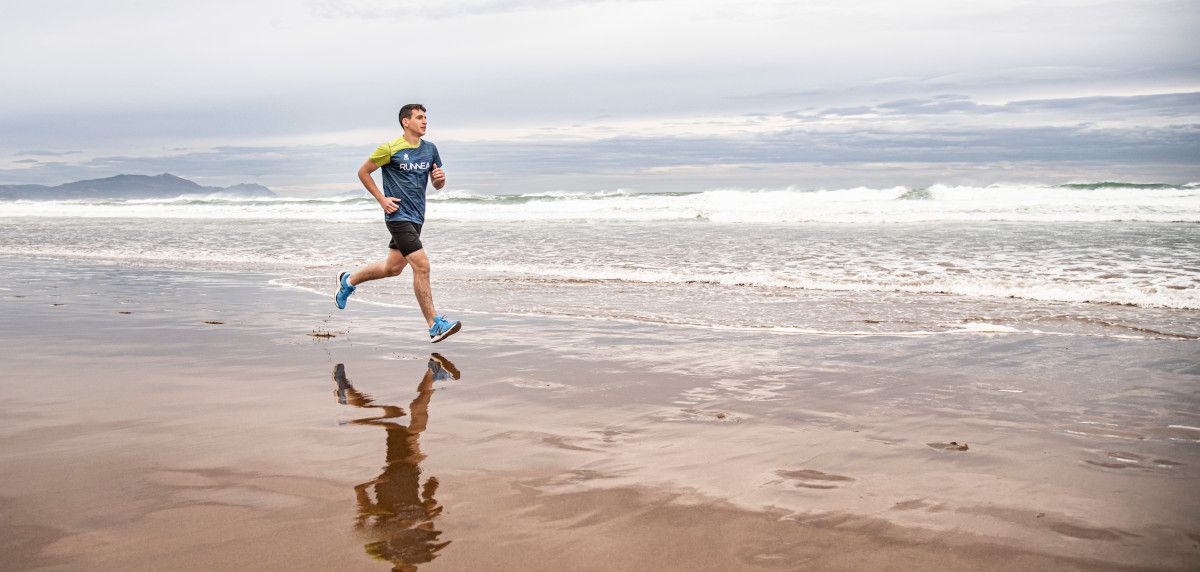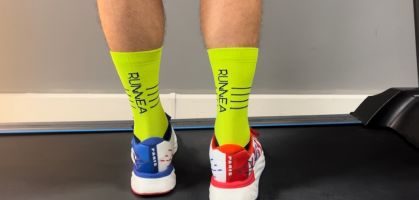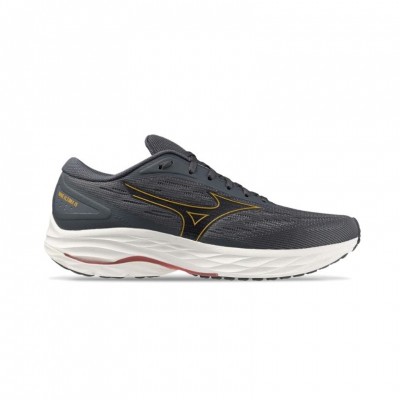In the dates in which we are it is a good time to practice running by the sea, but first you have to clear a doubt: Running on the beach with or without Running shoes on? At Runnea we try to dot the i's and cross the t's, and we offer you everything you need to know to run on the beach safely, at the same time we give you some basic tips that will help you enjoy your workouts on the sand.
That's the thing about summer. In most cases we go in search of sun and beach. And surely being in that situation, coupled with your passion for running, you've had the urge to approach the shore, and start jogging barefoot, while the water covers your feet. But...is barefoot running better than running barefoot in your Running shoes on the sand on the beach? Watch out for the next few lines, because we'll try to find out!

Arguments for and against running on the beach
Like everything else in general, running on the beach has two sides of the same coin. On the one hand we come across its innumerable benefits, but it is no less true that, on the other hand, we must also pay attention to the contraindications, which also exist.
On the basis that the sensation of running barefoot expands the natural range of motion and tends to strengthen both tendons and muscles of our lower body. As corroborated by several studies on the subject, it should also be noted that running on the sand of the beach involves a greater energy expenditure than running on the asphalt.
Striding on the sand involves more mechanical work, while at the same time you have to deal with greater instability due to the characteristics of the terrain itself.
Therefore, the moral of the story is that if you are not used to the concept of barefoot running, it is better to opt for a process of adaptation that allows all your muscles and joints to get used to the new surface. They tend to stretch longer when you run on the beach.

Possible injuries from running on the beach with or without Running shoes
It is clear that the alternation of surfaces is something positive and necessary for every runner to be able to progress with a higher degree of efficiency.
Don't forget that running on harder surfaces puts more stress on the bones, while running on softer and softer terrain places more stress on the tendons.
Thus, starting by running two or three times a week will help you acclimatize better, test your balance, as well as whether your body adapts to the uneven terrain. In fact, skipping this adaptation stage can lead to nagging injuries, which can leave you in the dock for a long time, such as plantar fasciitis, ankle sprains, and even Achilles tendon problems.
That said, if you don't usually run barefoot, your best bet is not to forget your Running shoeswhen you go jogging on the beach. The reason is rather simple, such as gaining more stability when running on more unstable terrain, guiding the foot every kilometer you go. In addition, they offer a greater degree of protection against external elements that can cause problems, such as cuts from shells.
In short, running on the sand on the beach is more difficult in that it requires more muscular effort. In addition, many factors come into play here: the density of the terrain, the distance to be covered, the runner's own experience, and, of course, the type of support offered by the running shoe to mitigate vibrations from impacts.

6 Running shoes for running on the beach
With that clear idea that if you are not used to running barefoot, you should wear Running shoes for running on the beach. Although there are no specific models for such purposes, in Runnea we present you these 6 options of models, which stand out for having an optimal cushioning to absorb impacts, relatively light and upper with breathable mesh for better ventilation.

Important tips and guidelines for running on the beach
And to top it all off, and now that we're getting down to business, it's also worth bearing in mind this series of basic tips. Yes, they're more than obvious, but it's a good idea to let them slip our minds to avoid major problems, and to make your jogs and runs on the beach and by the sea a pleasant experience.
Gradual transition
You shouldn't start out crazy, and on your first day of vacation run 5 kilometers of continuous running. To establish this adaptation process, it is advisable that the first two days you dedicate to walking so that your tendons and muscles get used to the change, and then gradually include the running sections. You will avoid injuries. You know from less to more, from shorter runs to longer runs. By the way, it is better to be guided by your sensations than by the times that your GPS heart rate monitor shows.
Running on the del mar
Compacted sand offers greater stability, so it is more convenient to run on the shore and wet ground than in a dune area with dry, soft ground. But it is also true that, from time to time, it is advisable to change direction to avoid creating an imbalance in the alignment of the body that occurs when running on the slope of the water.

Staying well hydrated at all times
No matter the distance or time, whatever you run, keep your water bottle handy. The premise of drinking before, during, and after exercise makes more sense than ever because of the excess sweating involved in running in hotter weather. Replenishing lost fluids is vital.
Better in the early or late afternoon.
Common sense, avoid the middle of the day, and when the sun's ultraviolet rays have the greatest impact. Plan your running sessions on the beach to be early in the morning or late in the afternoon. You will appreciate that the sun is not so strong.
Wear a hat, socks and high sun protection cream.
Don't hesitate to wear necessary accessories such as a cap, which will help protect your head while running; invest in a good SPF 50 sunscreen, and it's important to look at the label to see if the sunscreen is water and sweat resistant. And finally, socks, although it may seem that they are not, are also important because they prevent the appearance of the annoying blisters and chafing.
And we continue taking advantage of the situation, do not forget the well-deserved swim in the sea. The sensations will be unbeatable, and you will repeat for sure!
Photos: Unsplash (Photos for everyone)
Read more news about: Running Training




















